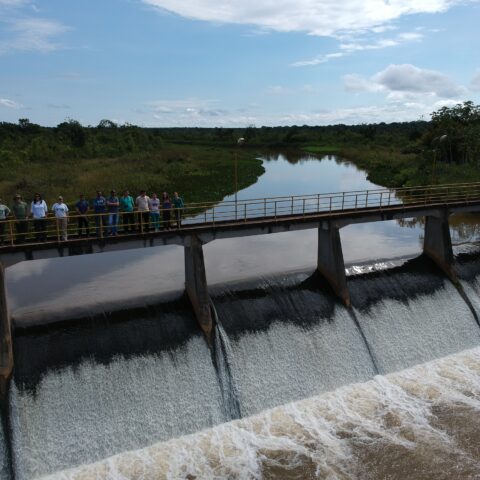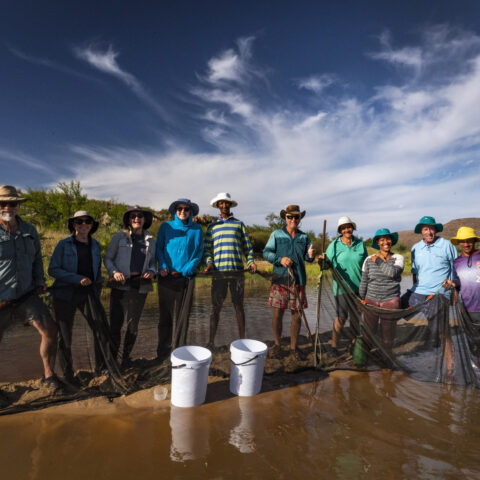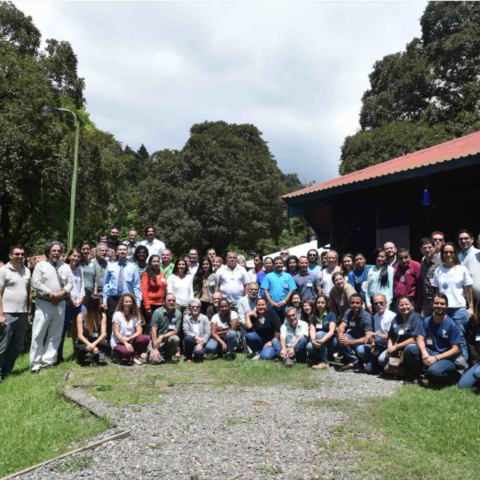First international conference on dam removal in Romania
13 November 2023Free Flow Conference 2024 – Full programme out now!
5 December 2023
Paulo S. Pompeu is a Professor at the Federal University of Lavras, Department of Ecology and Conservation, in Brazil. Paulo has ambitious plans for the Pandeiros River. He and a team of researchers and practitioners have proposed the removal of the inactive Pandeiros hydroelectric power plant, making it the first-ever dam removal proposed in Brazil! Pioneering the first dam removal in Brazil is not an easy challenge but step by step, Paulo is getting closer to seeing this project become a reality.
What is the name of the dam planned for removal?
[Paulo] We plan to remove the dam of the currently inactive Pandeiros hydroelectric power plant. It is located on a small tributary of the São Francisco River, the Pandeiros River in Brazil. The São Francisco River basin is the third largest basin in South America and is entirely within Brazilian territory.
The Pandeiros River is a small tributary of the São Francisco River in Brazil (© Diego Castro).
What inspired the proposed dam removal?
[Paulo] Based on numerous studies conducted by Brazilian research groups, it became clear that maintaining long stretches of free-flowing rivers is the best option for the conservation of migratory fish species in the country and the Amazonian Basin. Mitigating measures such as fish passages and stocking have limited effects and, in several cases, can even be detrimental. Therefore, careful planning of dam placement is crucial, including the possibility of removing some dams. In the case of the Pandeiros dam, since the power plant was inactive, it provided us with the opportunity to carry out the first removal in Brazil.
The Pandeiros hydroelectric power plant on the Pandeiros River (© Diego Castro).
Have there been any challenges along the way and how are you and others working to over those challenges?
[Paulo] Yes, there have been (and still are) two major challenges. Since this is the first case in Brazil, we don't have a strong legal framework on how the decommissioning process of a hydroelectric plant should be licensed. The second challenge concerns the stance that local people have on the dam and its potential removal.
How has the local community responded to the proposed removal?
[Paulo] Initially, the population reacted negatively. Since the dam is very old, most people in the area have never experienced the river in its natural state. Therefore, the anticipated change in the landscape raised a series of concerns. Additionally, the proliferation of fake news, such as claims that the river would dry up if the dam were removed, added to the resistance. Some of the resistance to the dam’s removal was fueled by the hope that the energy concessionaire, owner of the old hydroelectric plant, would provide some form of compensation to local people. It's important to note that the region around the dam is quite impoverished, with a range of legitimate demands. However, more recently, through environmental education efforts, most residents came to understand that there would be significant environmental benefits without harming them. Therefore, it is possible that soon, the dam will be removed.
What fish species, or other species/ecosystems could benefit if the dam is removed?
[Paulo] The case of the Pandeiros dam is interesting because an entire ecosystem, rather than specific species groups, would benefit. The Pandeiros River is designated as a preservation river. This means that no dams should exist along its course. This status is linked to the presence of a large floodplain in its lower course, which already constitutes a conservation unit. Therefore, the removal of any upstream interference is positive for the functioning of the local ecosystem. The dam and reservoir themselves are small-scale, with very little impact on local hydrological and sediment dynamics. Nevertheless, the presence of the small reservoir is capable of locally increasing the presence of non-native aquatic species.
How many river kilometers could be reconnected if the dam were removed?
[Paulo] Downstream from the Pandeiros dam, there are waterfalls that act as partial barriers to fish migration. However, during exceptional floods, various species, including migratory ones, are capable of surmounting them and colonizing the upstream region. Thus, the removal of the dam would allow the currently isolated 50 kilometers of river to once again have the original biogeographic processes reestablished.
What is one thing that you and others involved in the proposed dam removal are most proud of to this point?
[Paulo] During earlier studies, we had the opportunity to assemble a large group of researchers who worked in an interdisciplinary manner. The team looked at how the dam interacts with local people as well as sediment dynamics, fish, aquatic invertebrates, riparian vegetation, ants, crustaceans, and mammals. In addition to the scientific gains from these partnerships, I would like to emphasize that the studies in Pandeiros, due to their novelty, initiated a discussion in Brazil about the possibility of dam removal. As a result, several old dams are beginning to be evaluated for possible removal.









